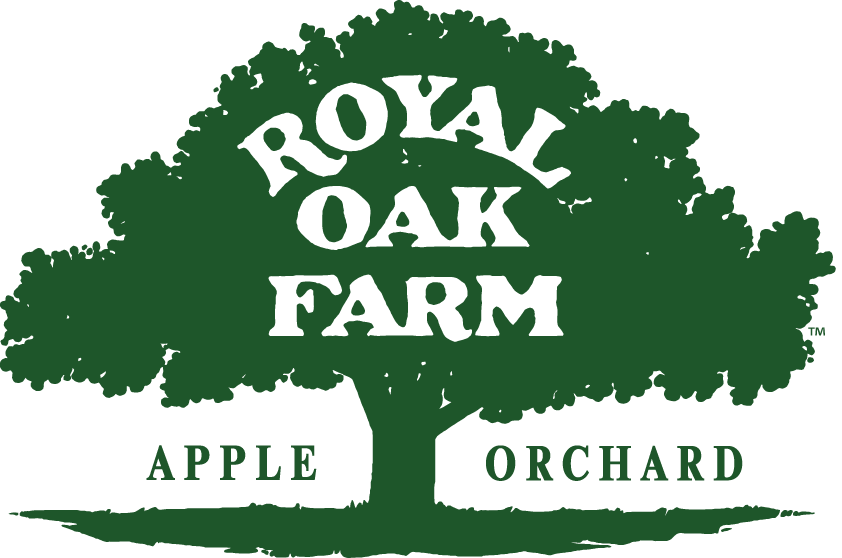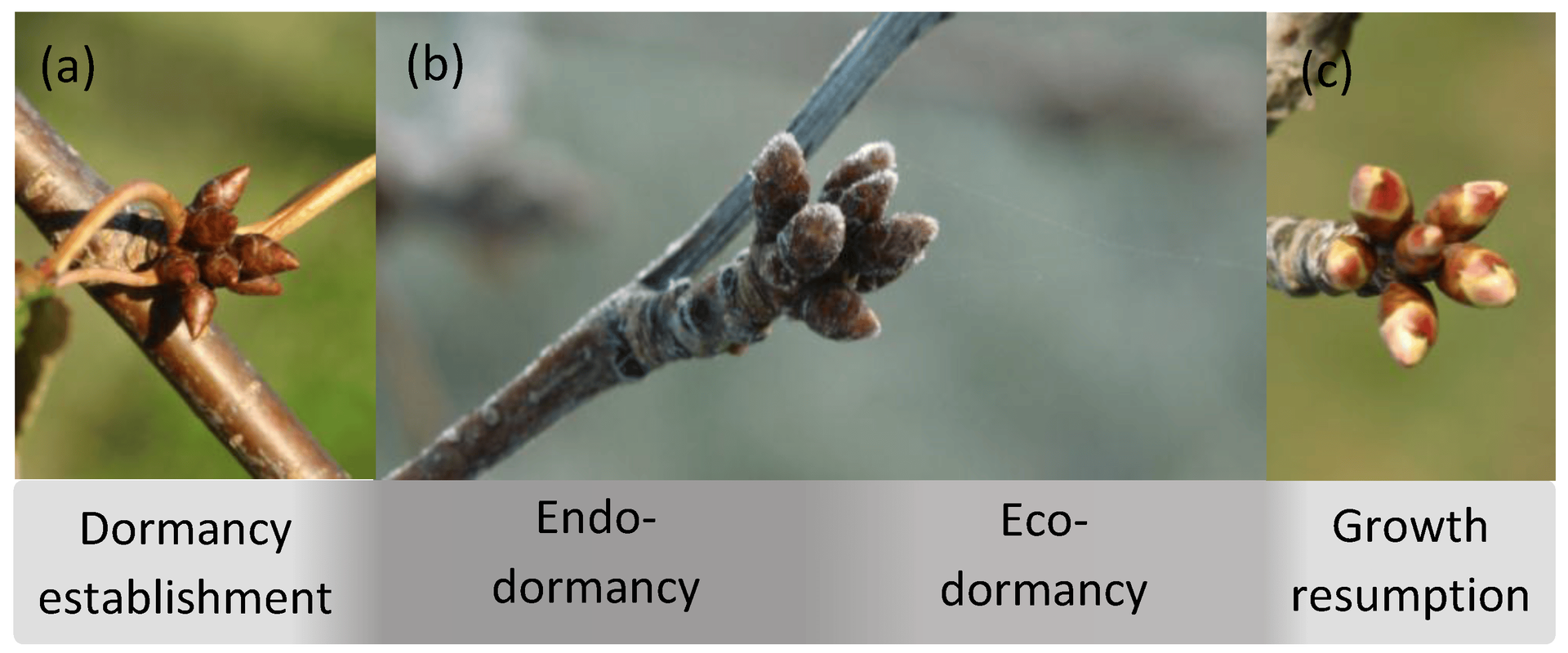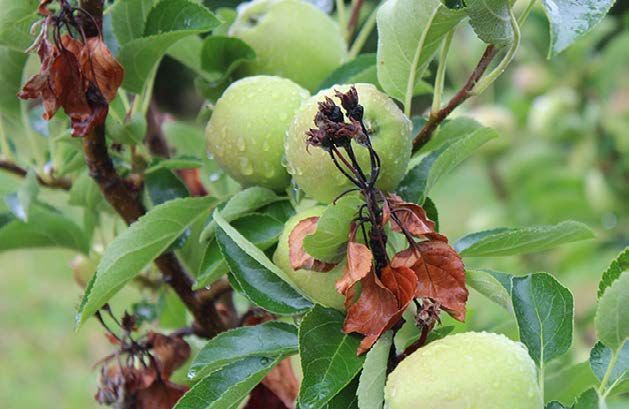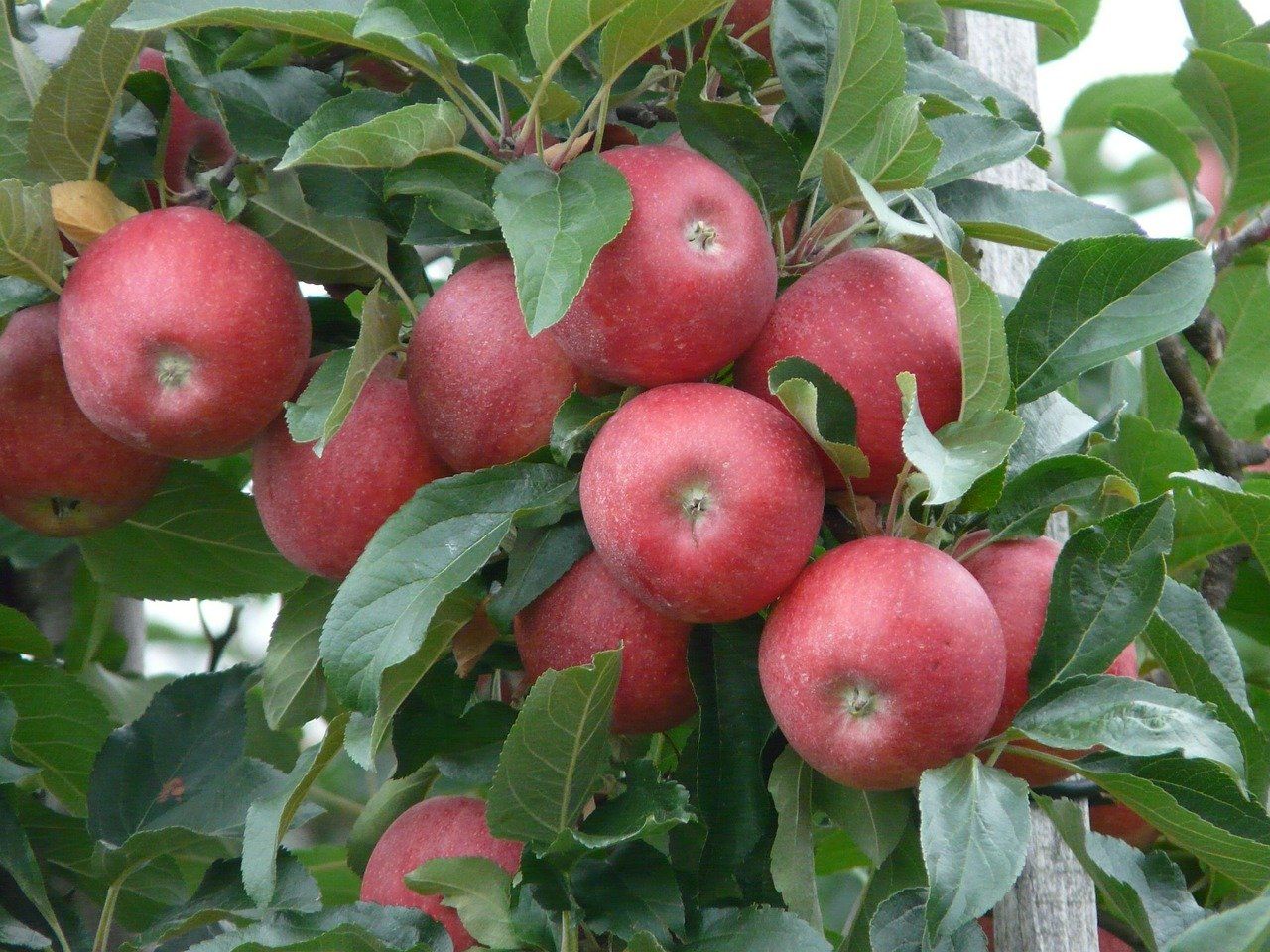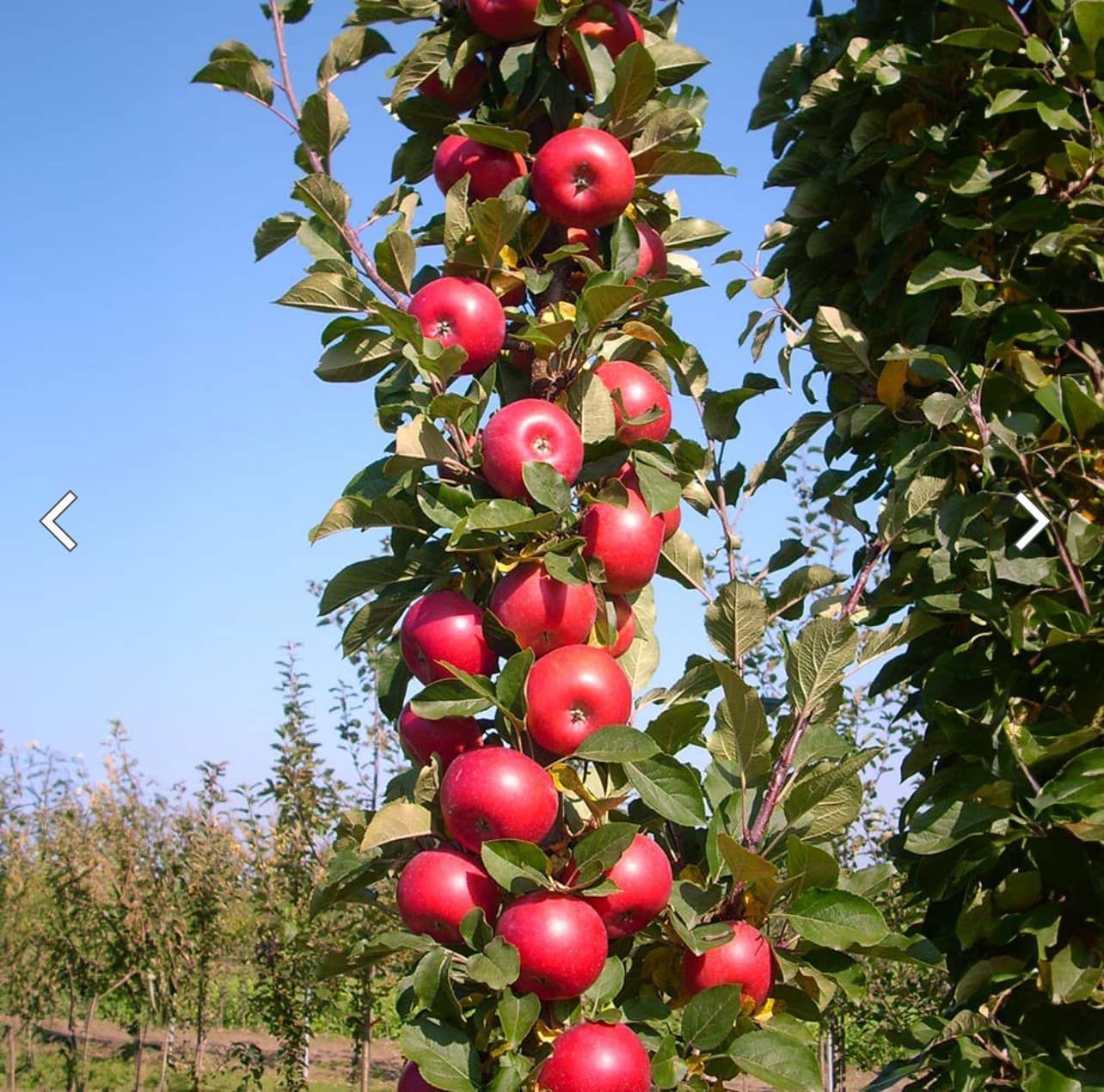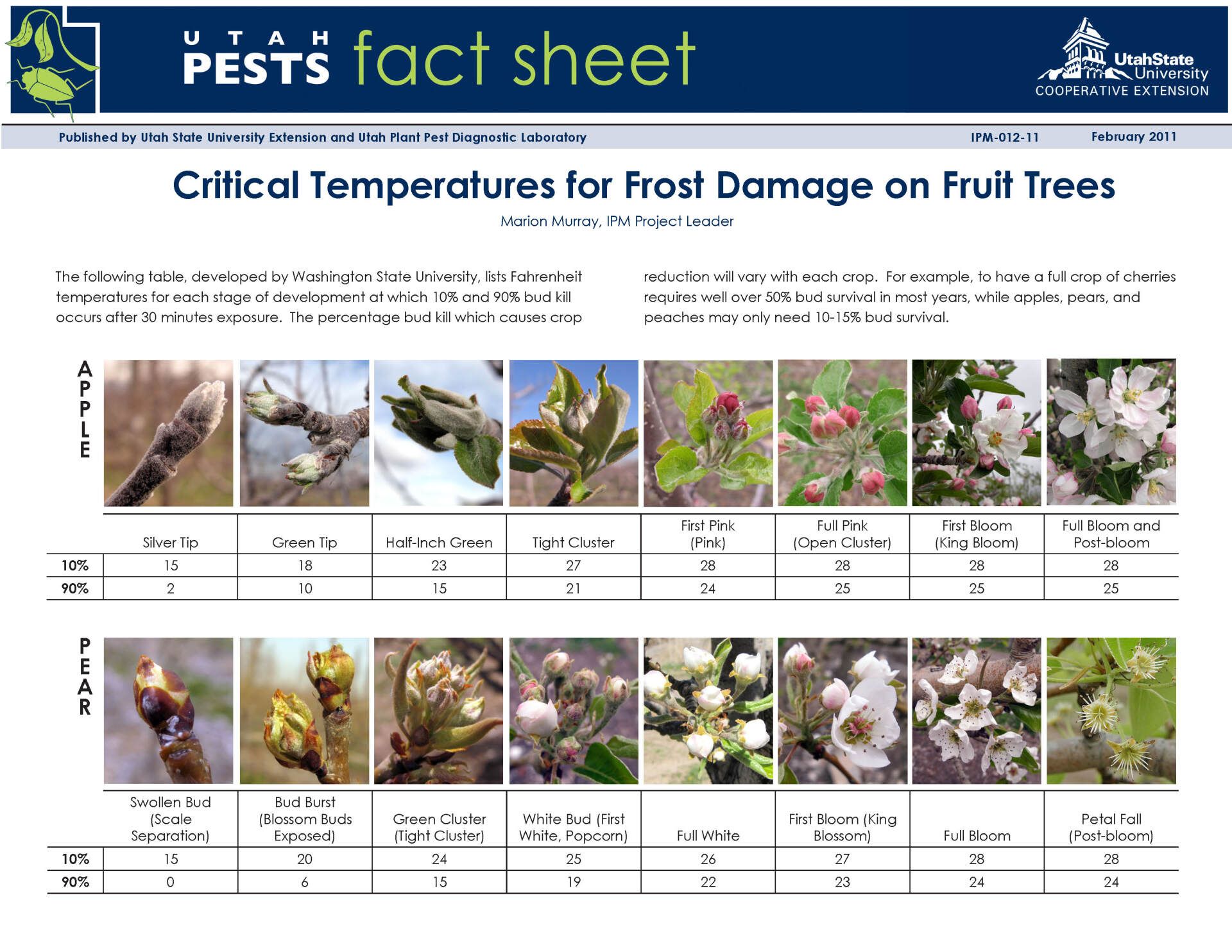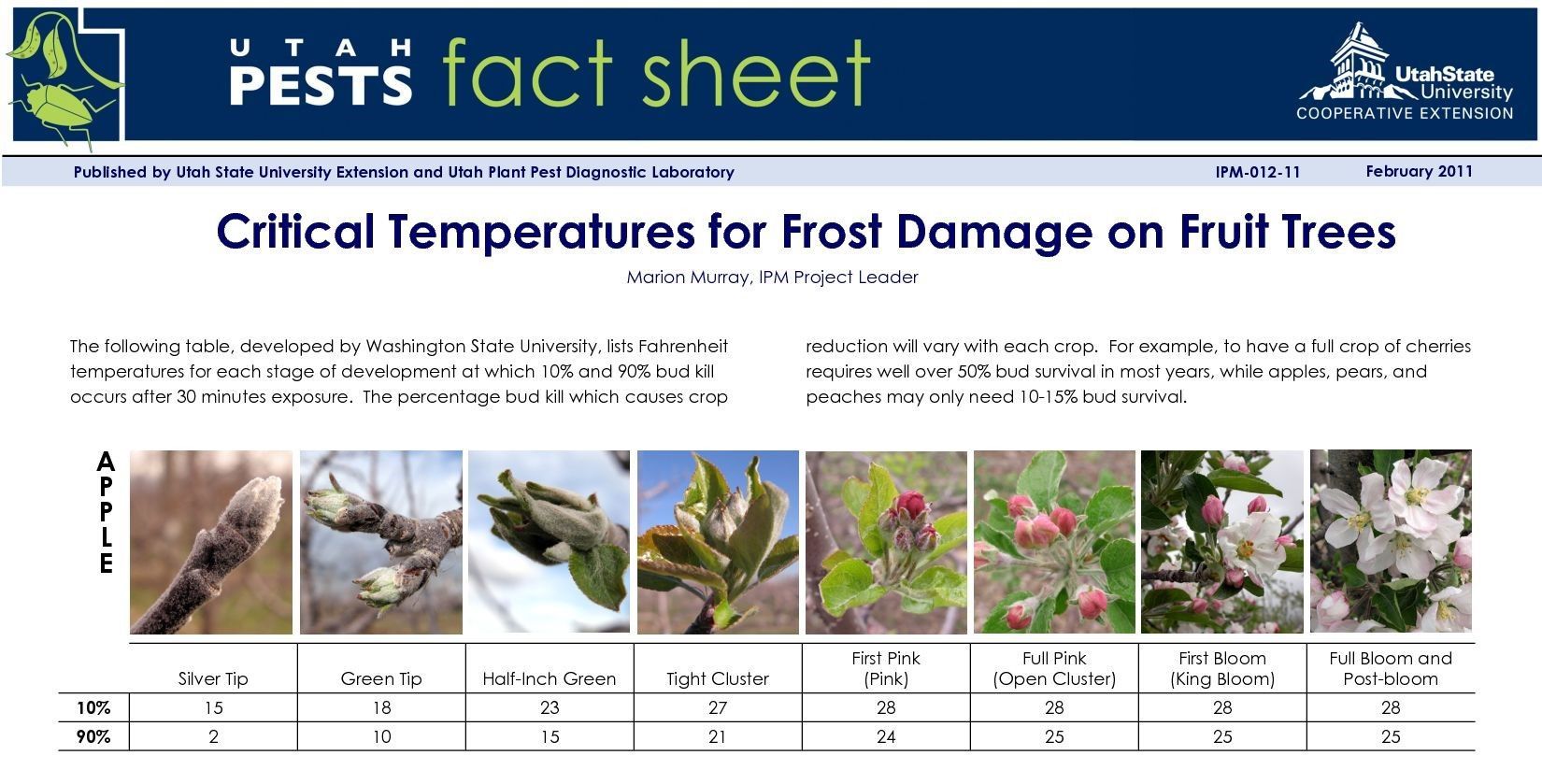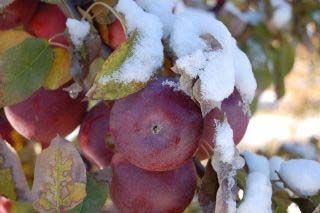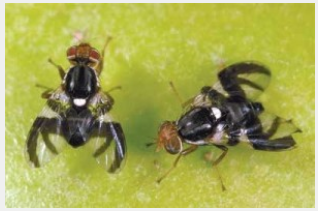Simplified Training for Tall Spindle Apple Trees
Simplified Pruning and Training Plan for the Tall Spindle System
Spreading the scaffolds on young fruit trees can aid in bringing about improved tree form, earlier fruit production, and improved fruit quality. Branches growing in an upright position tend to be vegetative and unfruitful for a longer period of time than those growing in a more horizontal position. The reason for this is related to the natural growth regulators in the tree. Thus, spreading the scaffolds of a young fruit tree to a pendant position below horizontal favors initiation of spur growth and flowers.
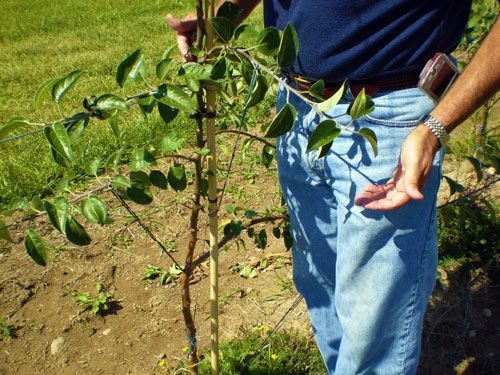
First Leaf - First year of growing after planting
At Planting
Plant highly feathered (branched) trees (6 -15 feathers) at a spacing of 3-4’ X 11-12’ (90cm-
1.2m X 3.3m-3.6m). Adjust graft union to 6” (15 cm) above soil level. Remove all
feathers below 24” (60 cm) using a flush cut. Do not head leader or feathers.
Remove any feathers that are larger than 2/3 the diameter of the leader
3-4” Growth: Rub off 2nd and 3rd buds below the new leader bud to eliminate competitors to the
leader shoot.
May
Install a 3-4 wire tree support system or tree stakes that will allow tree to be supported to 3m.
Attach trees to support system with a permanent tree tie above 1st tier of scaffolds
leaving a 2 inch diameter loop to allow for trunk grow.
Early June
Tie down each feather that is longer than 10” (25 cm) to a pendant position below
horizontal with biodegradable rubberbands.
Second Leaf - Second year of growing after planting
Dormant
Do not head leader or prune trees.
10-15 cm growth Pinch lateral shoots in top 1/4 of last years leader growth removing about 5 cm of growth (the terminal bud and 4-5 young leaves).
Early June
Hand thin crop to single fruit four inches apart. (Target 15-20 fruits/tree)
Mid June
Re-pinch all lateral shoots in top 1/4 of last years growth. Tie developing leader to
support system with permanent tie.
Third Leaf - Third year of growing after planting
Dormant
Do not head leader. Remove overly vigorous limbs that are more than 2/3 the
diameter of the leader using a bevel cut.
Late May
Thin according to crop load, tree strength, and weather conditions, then
follow up with hand thinning to appropriate levels to ensure regular annual cropping
and adequate fruit size. (Target 50-60 fruits/tree)
June
Tie developing leader to support system with a permanent tie.
August
Lightly summer prune to encourage good light penetration and fruit color.
Fourth Leaf
Dormant
Do not head leader. Remove overly vigorous limbs that are more than 2/3 the
diameter of the leader using a bevel cut.
Late May
Thin then follow up with hand thinning to appropriate levels to ensure
regular annual cropping and adequate fruit size.(Target 100 fruits/tree)
June
Tie developing leader to support system with a permanent tie at the top of the pole.
August Lightly summer prune to encourage light penetration and fruit color.
Mature Tree Pruning (Fifth-Twentieth Leaf)
Dormant
Limit tree height to 10’ (3m) by cutting leader back to a fruitful side branch.
Annually, remove al least 2 limbs including lower tier scaffolds that are more than
2/3 the diameter of the leader using a bevel cut. Shorten bottom tier scaffolds where
needed back to side branch to facilitate movement of equipment and preserve fruit
quality on lower limbs. Remove any limbs larger than 1” diameter in the upper 2ft
(60cm) of the tree
Late May
Thin then follow up with hand thinning to appropriate levels to ensure
regular annual cropping and adequate fruit size. (Target 100-120 fruits/tree)
August
Lightly summer prune to encourage light penetration and maintain pyramidal tree
shape after terminal buds have set..
If you are interested in a more detailed outline of the Tall Spindle Training System, refer to the full all Spindle Planting System by Steve Hoying, Terence Robinson, and Mike Fargione at the Cornell University Cooperative Extension Hudson Valley Lab and NYSAE.
Backyard Orchard Management @ Royal Oak Farm Orchard
Backyard Orchard Management @ Royal Oak Farm Orchard is a blog for the home fruit tree grower providing information about fruit tree management, fruit tree pruning & training and Integrated Pest Management from the IPM Specialist and Certified Nurseryman at Royal Oak Farm Orchard, a 22,000 tree apple orchard and agri-tourism operation located in Harvard, Illinois.
Click or tap any title to read that post.

